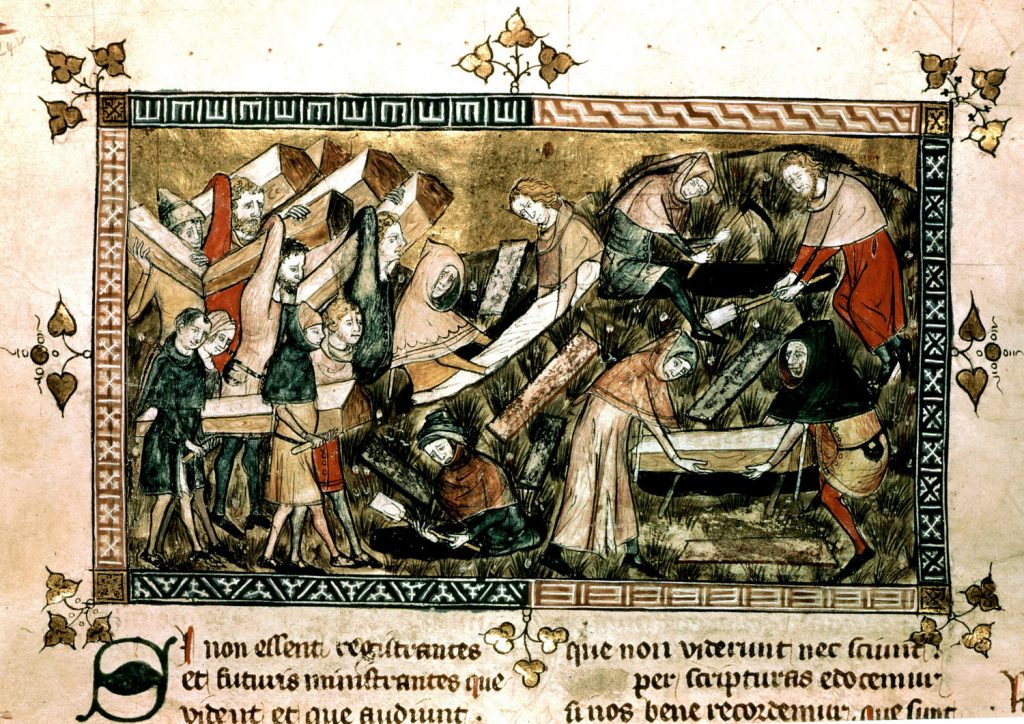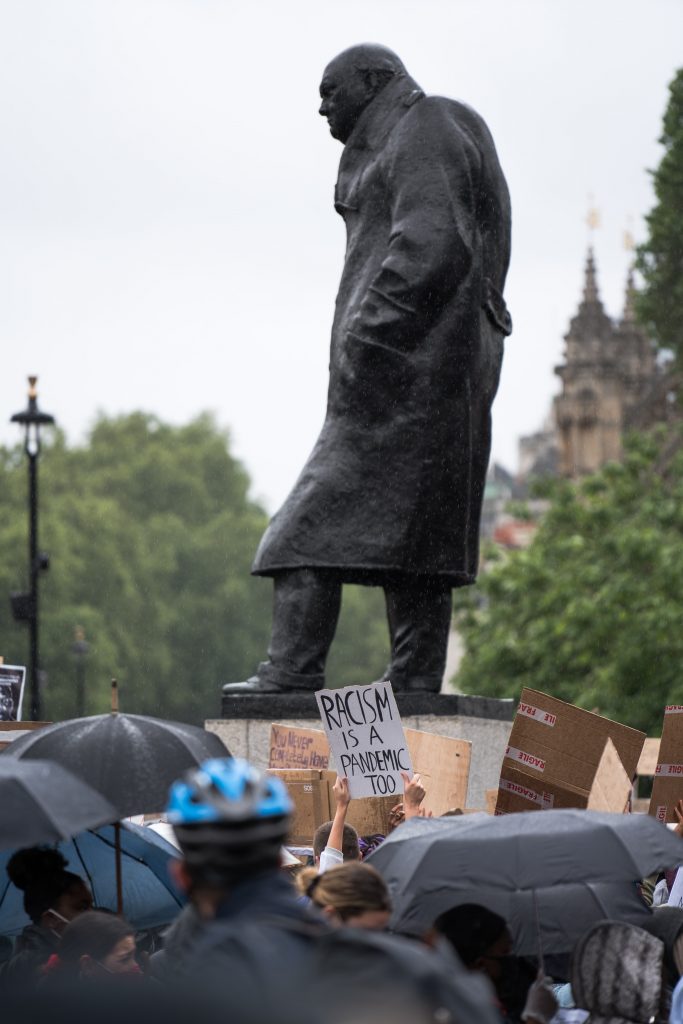Faith in the Time of Plague
Congress can’t seem to pass a stimulus package or keep the president from hosting COVID parties. But here’s what I wish they would do: Ban the use of the phrase “In these difficult times.”
You want to know difficult times? About five hundred years ago, a microscopic bacteria called y. pestis hitched a ride on some rats traveling in a caravan from the Far East. When the wagons rolled up in Europe and unloaded their cargo of aromatic spices and sumptuous silks, out came the infected rats, unleashing a plague that decimated the continent, cutting the population in half and leaving society in tatters.

The coronavirus may have arrived from foreign shores, too, and it’s wreaking havoc on our lives, killing millions across the globe and more than two hundred thousand in the United States. But terrible though it is, modern medicine, public health practices, and a hoped-for vaccine will likely prevent the devastation that happened in Europe between 1346 and 1353.
So comparing the coronavirus to the plague isn’t fair. But it might be a good idea to look at how the Black Death changed the world in the fifteenth century because maybe COVID will change our world in the twenty-first. Maybe it’ll change our church, too. And maybe we can be ready for it.
The Black Death not only killed off people. It also helped to kill off the feudal system. Then, as now, disease took a bigger toll on the poor than on the wealthy, wiping out nearly half the working class and creating a serious labor shortage. Those who were left began to demand higher wages—and the right to seek work wherever they liked, cutting their feudal ties to the wealthy nobility who’d owned their lives and their livelihood. The price of land plummeted too, so enterprising peasants could lift themselves out of serfdom with a bit of real estate. The end of the plague brought the rise of the English yeoman farmer—the hardworking small businessman with a hundred acres to call his own.
Women gained a higher status too. So many men had died that land began to pass into their hands for the first time. With the men gone, they were able to join trade guilds and operate businesses; they even gained some control over their choice of a husband. Life after the plague was no utopia for late medieval women, but those who were lucky enough to survive were often better off than they’d been before.
And the Church? Big changes there, too. The plague may have been easy on the nobles—and on the princes of the church—but it killed an estimated 40 percent of the ordinary parish clergy, who’d been tasked with visiting the sick and burying the dead. The result: A severe shortage of priests. The Church’s response? Tap the junior varsity. Ordination rules were abandoned and uneducated 20-year-olds and a smattering of married men were installed in parishes. In monasteries, the age for taking vows was dropped to 15, and throughout Europe “glaring cases of misfits at the altar” were reported.
But look a little deeper, and it turns out that changes were brewing beneath the surface. At a time when the sacrament of Penance was more important than the Eucharist, it was a big deal that priests were unavailable when so many people were at the brink of death. So the pope authorized lay people—including women—to hear the confessions of the sick and dying. Meantime lay women were assuming more responsibility at the parish level.
And with the clergy dead—or missing in action—ordinary Christians began seeking paths to God that cut out the Church altogether. The years after the Black Death saw the rise of lay spiritual movements, the growth of pilgrimages, the translation of the Bible into English, and the emergence of mysticism—a way to directly experience God. And all these paths were open to women as much as they were to men.

Of course, the rules may have been bent during the plague, but once things got back to normal, those in power tried to turn back the clock. But it was tough to get the genie back into the bottle. In 1381, in one of the earliest populist movements, more than 10,000 ordinary people, a larger force than any contemporary army, staged the Peasants’ Revolt in England, demanding higher wages, the end of Church corruption, and the right to choose the terms—and the place—of their employment. And it wasn’t just peasants; the revolt included merchants, tradesmen, a fiery priest named John Ball—and a fair number of women. Though they had some early successes, the movement was eventually crushed. But it showed the power of the people to demand change.
Like the Black Death in fourteenth-century England, COVID has exposed inequality and oppression in twenty-first-century America, especially for people of color, the poor, and women, brought to the forefront in the Black Lives Matter protests. Change is coming at a glacial pace in government—and in the church, too. In the face of severe clergy shortages, demands for women’s ordination, a synod’s recommendations for a married priesthood and a female diaconate have all been brushed aside. And the pope’s recent call for a remodeling of parish life—well, we’ll see what happens.
But in the face of the devastation, and the sorrow, and the loss, maybe we can take heart. Maybe the aftereffects of the pandemic will turn out to be a catalyst for real change. Maybe, for once, history can teach us a lesson. Maybe these difficult times will lead to better days ahead.

4 Responses
The genie is out of the bottle. “Brothers and Sisters All.”
Amen!
What an insightful post! The chaos of that image is reflected in our feelings, if not exactly in what we have to do to control the plague we are part of. Your chronicle of the changes that happened afterwards gives me hope that the changes that will follow our plague will move our society and our church forward.
Thanks for your comment, Regina. It’s such a cliche to “look for the silver lining,” but it’s interesting to think that positive change has often happened in the wake of turbulence. So I guess we’ll keep our fingers crossed, and keep plugging away!